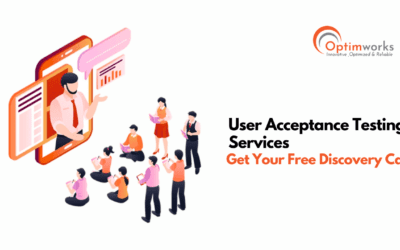In today’s digital world, APIs are the glue that holds your startup together—connecting front-end interfaces with backend logic, databases and third-party services. But that also makes them one of your most exposed assets. So having an API Penetration Testing Checklist for Startups is no longer optional—it’s required to protect your app and users from threats.
For fast-scaling startups, securing APIs early isn’t a luxury—it’s a necessity.
This article will walk you through a concise, no-nonsense API penetration testing checklist for startups. We’ll also show you how Optimworks helps high-growth teams stay ahead of vulnerabilities—without slowing down your release cycles.
Whether you’re pre-launch or in scaling mode, this guide will help you avoid security pitfalls that could cost you users, investor trust and data.
Why Hackers Targeting Startup APIs
Unlike web UIs, APIs expose logic directly to the outside world. A well-meaning startup might:
- Launch with MVP APIs before security policies are in place
- Rely on third-party libraries without validation
- Skip rate limiting or session controls for speed
Unfortunately, attackers know this. APIs have access to authentication tokens, payment logic, customer data and business operations—so they’re high value.
If your team is building APIs fast without security baked in, you’re not alone—but the risks are real. One missed auth check can expose user accounts. One verbose error message can leak database info.
That’s why penetration testing your APIs must start early and evolve as you grow.
The API Penetration Testing Checklist for Startups
Here’s a startup-friendly checklist that balances depth with speed. Use it pre-launch or before major sprints.
1. Authentication & Authorization Checks
- Ensure token-based auth (OAuth2, JWT) is properly scoped and expires as intended
- Validate role-based access control (RBAC) at the API level—not just the UI
- Confirm no privilege escalation is possible by altering parameters (e.g., ?user_id=123)
- Test for IDOR (Insecure Direct Object References) and session hijacking
Startup Tip: Avoid defaulting to “admin” access during dev. These shortcuts often make it to prod.
2. Rate Limiting & Throttling
- Test for abuse by sending high-frequency requests
- Verify rate limits per IP, user, and endpoint
- Simulate bot-style attacks (e.g., brute-force login, OTP spam)
Real Risk: Without limits, one attacker can perform 10,000 password guesses in seconds.
3. Input Validation & Injection Testing
- Fuzz all parameters—especially those interacting with databases, XML, or file systems
- Test for SQL, XSS, XML, and command injection
- Validate that error messages don’t reveal stack traces or internal logic
Checklist Reminder: Input validation should happen server-side—not just client-side.
4. Token and Credential Handling
- Ensure tokens are never logged or stored insecurely
- Test refresh token behavior (can you reuse old ones?)
- Check for hardcoded secrets in API responses or headers
Startup Scenario: A staging token left in production code can compromise your entire user base.
5. Sensitive Data Exposure
- Confirm that sensitive data (PII, tokens, credentials) are masked or encrypted in transit
- Use tools to inspect headers and response bodies for leakage
- Ensure HTTPS is enforced across all API endpoints
6. Business Logic Abuse
- Simulate race conditions (e.g., placing multiple orders simultaneously)
- Test workflows in unintended sequences (e.g., apply coupon after payment)
- Look for logic flaws attackers can exploit for financial or functional gain
Startup Risk: Logic bugs are rarely caught by automated tools—they require human thinking.
7. Third-Party & Dependency Risks
- Analyze security of integrated services (payment gateways, CRM, etc.)
- Test callback endpoints for validation (e.g., webhook abuse)
- Ensure APIs don’t expose internal service names or debug paths
8. Logging, Monitoring & Alerting
- Validate that security events (auth failure, rate limits, input rejections) are logged
- Check that logs don’t capture sensitive data (tokens, passwords)
- Confirm alerting systems trigger under attack scenarios
Let’s Make Your APIs Bulletproof.
Optimworks gives startups clarity, confidence, and actionable fixes through expert-driven API security testing. Book your free pilot today.
API Security Gaps Most Startups Overlook
Even well-intentioned teams miss these critical items during API security audits:
- Shadow Endpoints: Internal or deprecated endpoints still active in production (e.g., /v1/beta/test-payment)
- Dev Tokens in Prod: Tokens with “dev” scopes reused across environments
- Unrestricted File Uploads: APIs accepting unvalidated file uploads can lead to RCE (remote code execution)
- Unprotected Test APIs: QA endpoints often lack auth—but are live in staging or production environments
At Optimworks, we include these in every baseline audit—because they’re common, dangerous, and often invisible until it’s too late.
How Optimworks Helps Startups Secure Their APIs
We understand the startup world: short sprints, limited resources, and high stakes. Our API security services are designed to fit that reality—not slow it down.
1. Startup-Focused Threat Modeling
We begin by understanding your product flow, data sensitivity, and attack surfaces—then tailor our tests accordingly. This saves time, avoids irrelevant checks, and focuses on real risks.
2. Manual Testing That Goes Beyond Tools
Automated scanners catch low-hanging bugs—but miss the creative abuse scenarios attackers love. Our engineers manually test your APIs for business logic abuse, misconfigurations, and workflow exploitation.
3. Speed, Without Sacrificing Depth
We don’t need 4 weeks and 40 meetings. Our typical engagement is 3–5 days with structured reporting, prioritized findings, and retest cycles. Because your product roadmap can’t wait.
4. Zero Noise Reporting
No filler. No jargon. Just a clear list of issues, impact, and fix recommendations—so your devs don’t lose a sprint deciphering CVSS scores.
5. Free Pilot Option
Still unsure? Start with a free pilot audit on one key API endpoint. We’ll show you the depth of our process with real findings—no strings attached.
Real Impact: A Startup Case Study
A fintech MVP team approached us just before their beta launch. They’d built fast and integrated several third-party services. Within two days, we identified:
- A logic flaw that allowed transaction bypass
- A missing token expiry check in the mobile API
- Error responses leaking internal system data
All of this was resolved within a week—and they launched with a clean slate and confidence. Today, they’re funded and scaling securely.
Final Thoughts
For startups, a security breach isn’t just a technical failure—it’s a business risk. API penetration testing doesn’t have to be expensive, complex, or slow. But it has to be done—right, and at the right time.
Use the checklist above to build your internal QA and security practices. And when you’re ready for deeper, hands-on API testing that actually thinks like an attacker—Optimworks is here to help.
Let’s secure your foundation before you scale.
Ready to Test Your APIs Like an Attacker Would? Let Optimworks help you harden your product with security insights built for startups. Get in touch now and start with a risk-free pilot.




